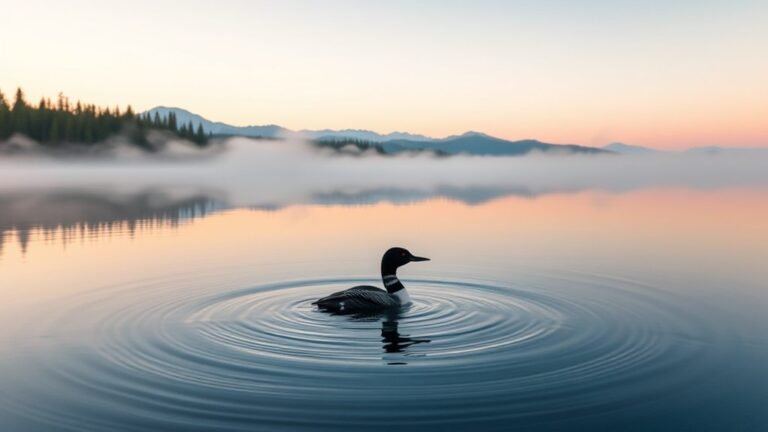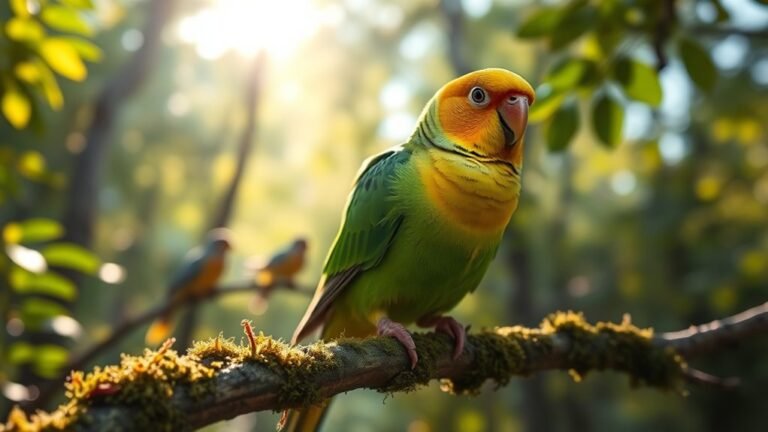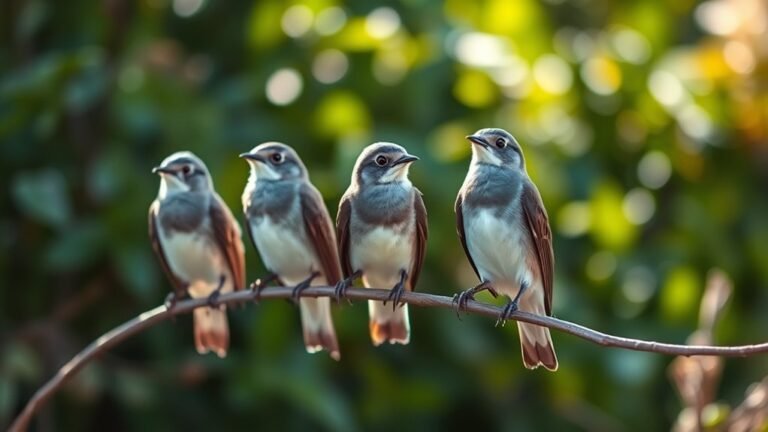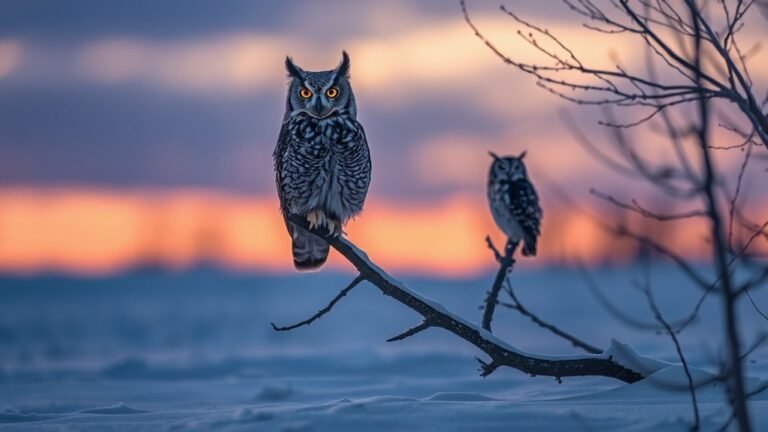Can Ducks Fly? Understanding Their Abilities
Can ducks fly? This question is interesting because not all ducks fly the same way. Some ducks, like mallards, can soar high in the sky to move from one place to another. They do this especially during migration. Other types of ducks, especially domesticated ones, often stay on the ground.
Why do ducks have different flying skills? It all comes down to their bodies and how they act. Wild ducks need to fly to find food and escape from dangers. Domesticated ducks are raised by people. They are often heavier, which makes flying harder for them.
Ducks are fascinating creatures. Learning about their flying abilities helps us understand how they live and survive.
A Quick Overview
Can Ducks Fly? Let's Find Out!
Ducks are interesting birds! Some ducks, like wild mallards and wood ducks, can fly very well. They can travel far and make quick turns in the air.
On the other hand, domestic ducks, like Pekin ducks, are heavier. They are raised for meat, which makes it hard for them to fly. So, while some ducks soar high in the sky, others stay close to the ground.
Ducks have special wings that help them fly. They have big feathers on their wings called primary and secondary feathers. These feathers help ducks take off and lift into the air.
Many ducks migrate. This means they travel long distances to find better places to live during different seasons. They use nature's signs to find their way and fly in a V-shape. This shape helps them save energy while flying.
However, not all ducks can fly. Some, like the Kiwi duck, can't fly at all. They have changed to live on the ground and look for food there.
So, ducks can fly, but it depends on the type of duck. Some are great flyers, while others are better off on the ground. Isn't nature amazing?
Overview of Duck Species

Ducks come in many kinds, and each type has its own special traits and behaviors. One of the most well-known ducks is the mallard. Male mallards have bright green heads, while female mallards have beautiful brown feathers. You can spot mallards in different places, like quiet ponds or busy city parks.
Mallards are very adaptable. They can live in many environments and often stay in groups. This group behavior is called flocking. When they quack, they're communicating with each other.
As you watch these fascinating birds, think about how their unique features help them live in different places. There's so much to learn and appreciate about ducks and their lives!
The Anatomy of a Duck: Wings and Feathers
Ducks are interesting animals, especially when you watch them fly. Their wings and feathers have a special design. Ducks have short and wide wings. This helps them take off quickly and move easily in tight spaces.
Let's look at their feathers. Ducks have different types of feathers. The primary feathers help them fly, and the secondary feathers help them lift off the ground. Together, these feathers make flying easier for ducks.
Underneath the outside feathers, ducks have fluffy down feathers. These feathers keep them warm when it gets cold outside.
Ducks are beautiful birds, and their wings and feathers help them survive. Learning about their body can make you appreciate them even more!
Types of Ducks and Their Flight Capabilities

When you learn about ducks, you'll see that different types can fly in different ways. Some ducks can fly far, while others may not fly at all.
Let's look at three common duck types and how well they can fly.
- Mallards: These ducks are great flyers. They can travel long distances and have strong endurance.
- Pekin Ducks: These ducks are mostly raised for their meat. Unlike Mallards, Pekin ducks often can't fly because they don't have strong wings.
- Wood Ducks: These ducks are quick and agile. They can fly well in wooded areas.
However, their flying ability can change depending on their conditions.
Migratory Ducks: Nature's Travelers
Each year, many migratory ducks travel thousands of miles to find the best places to breed and eat. You might wonder how these incredible birds know where to go. They follow special paths that their families have used for years.
While flying, ducks use clues from nature to help them. They look at the sun and stars, and they can even sense the Earth's magnetic fields.
When you see these ducks flying in a V-shape, it shows how they work together. They help each other and save energy by flying this way.
Learning about their journeys can help you appreciate these amazing creatures even more. As you watch them, think about the tough times they face. They show us how strong and flexible life can be, reminding us that we all share this environment together.
Domestic Ducks vs. Wild Ducks

Ducks are amazing birds! They come in two main types: wild ducks and domestic ducks. They live quite different lives.
Let's explore three important differences between them.
- Flying: Wild ducks are great at flying long distances. They travel far to find food or better weather. On the other hand, domestic ducks don't fly as much. People have bred them to be heavier, which makes flying hard for them.
- Living Spaces: Wild ducks live in nature, like lakes, rivers, and wetlands. They find their own food and make their homes in the wild. Domestic ducks, however, usually live on farms or in backyards. They rely on humans for food and shelter.
- Survival Skills: Wild ducks are experts at finding food and staying safe from danger. They know how to forage in the wild. Domestic ducks, however, have been raised by humans. This means they often don't have the same skills to find food on their own.
Understanding these differences helps us appreciate the lives of both wild and domestic ducks. Wild ducks enjoy freedom and adventure, while domestic ducks enjoy cozy homes and human care. Each type of duck has its own special place in our world!
Factors Affecting Duck Flight
Watching ducks take off into the sky is pretty cool! There are many things that help them fly well. Ducks have strong wings and special feathers that help them move through the air easily. They know how to fly efficiently, which means they can go really far without getting tired.
Sometimes, you might see ducks using warm air rising from the ground to glide. This helps them save energy while they stay in the air. Weather also matters; things like wind and temperature affect how they fly.
When you think about these factors, it makes you appreciate ducks more. It also helps you see how everything in nature works together to support their flight.
The Role of Wing Size and Shape
Wing size and shape are very important for ducks when they fly. Let's look at three main points about how their wings help them soar:
- Wing Span: Ducks with longer wings can lift off better and glide for long distances. This helps them travel far in the sky without flapping a lot.
- Wing Shape: Ducks have broad wings that give them more stability. This shape is great for quick bursts of speed, helping them dodge obstacles or catch food.
- Wing Adaptations: Different duck species have special wing shapes that suit their homes. These adaptations let them fly well in many environments, whether they need to move quickly or glide slowly.
By learning about duck wings, we can see how these birds are built for flying. Their wings are a perfect mix of design and function that helps them thrive in the skies.
Isn't nature amazing?
Environmental Influences on Duck Flight
Ducks have to pay attention to their surroundings when flying. Many things in the environment can change how they fly. For example, changes in the weather can change the paths they take when migrating. If their homes are damaged, they might've a harder time finding food, causing them to fly farther to search for it.
Also, if there are many predators around, ducks become more careful. They change how they fly to stay safe. Sometimes, you can see that ducks like to fly in groups. This helps them save energy and stay safe from danger.
Flight Training in Young Ducks
Young ducks go through a neat training process to learn how to fly. During this important time, you can see their wings grow strong and watch them practice flying.
Here's what you might notice about their training:
- Flapping Practice: Young ducks flap their wings a lot. This helps make their muscles stronger and improves their flying skills.
- Takeoff Attempts: The ducks make little jumps and hops. These short moves help them feel ready for takeoff.
- Social Learning: By observing older ducks, they learn how to fly. Watching their older friends helps them fit in with the group.
Through these fun steps, young ducks learn to fly well. They become skilled fliers and play an important role in nature.
Duck Behavior and Flight Patterns
When you watch ducks, you can see how they interact and fly together. Their behavior depends a lot on their social groups and what's happening around them.
Ducks fly as a team. They match their movements to stay together in the sky. Flock behavior affects many things, like how they take off and land.
Ducks use quacks and their bodies to talk to each other. They signal what they want to do, helping the whole group stay connected. If they get scared, they all take off at the same time, showing their quick reactions.
Watching how ducks work together can help you appreciate their strong bonds and lively communities.
The Importance of Flight for Survival
Flight is very important for ducks. It helps them survive in many ways. Here are three reasons why flying is so crucial for them:
- Finding Places to Live: Ducks often need to fly to find new homes. They move to find better places when the seasons change.
- Staying Safe from Predators: When ducks fly, they can escape from animals that want to eat them. This keeps them safe and helps them survive.
- Finding Food: Ducks can see food from the sky. By flying, they can look for food over large areas quickly.
These reasons show that flying isn't just a fun thing for ducks—it is very important for their lives.
Understanding how ducks use flight helps us appreciate the nature around us.
Duck Species That Are Unable to Fly
Some ducks can fly really well, but others can't.
These ducks live in places where they don't need to fly. One famous group of flightless ducks comes from New Zealand. They go by names like the Kiwi duck. Instead of flying, they spend their time looking for food on the ground in their safe homes.
Many of these ducks can't fly because they live in areas with few predators. This helps them stay safe, but it also makes them vulnerable to threats like losing their homes and new species taking over.
Efforts are being made to protect these unique ducks. Learning about flightless ducks helps us see how strong wildlife can be and shows us why we must protect them.
Myths and Misconceptions About Duck Flight
Many people have wrong ideas about duck flight. Some think all ducks are great at flying or that flying is how they escape trouble. But that's not true.
Here are three common myths about ducks and their flying:
- All ducks can fly long distances – This isn't right. Some pet ducks can't fly at all because they were bred that way.
- Ducks are always graceful when flying – While many ducks look good in the air, some are clumsy and have a hard time taking off.
- Ducks always pick flying over walking – Not true! Some ducks like to walk, especially when they're looking for food.
Knowing the facts helps us learn more about these interesting birds!
Frequently Asked Questions
Can Ducks Fly at Night?
Yes, ducks can fly at night! They are amazing birds. When flying at night, ducks use the stars and the moon to help them find their way. Watching ducks fly in the dark can be really interesting. It shows how they adapt to different situations and rely on their natural instincts. So, if you ever see ducks flying at night, just know they're doing what they do best!
Do All Duck Species Migrate?
Not all ducks migrate. Some ducks fly long distances, while others stay close to home all year round. This depends on their species and the environment around them.
Ducks that migrate often do so to find food and better weather. They might travel to warmer places in the winter. Ducks that don't migrate can adapt to their surroundings. They find food and make homes where they live, allowing them to stay put.
How Fast Can Ducks Fly?
Ducks are pretty cool when it comes to flying. They can fly fast, usually between 40 and 60 miles per hour. This speed can change depending on where they're flying and why. Knowing how fast ducks can fly helps us see how well they adapt to different places and situations. It's amazing to think about how these birds travel long distances to find food or safe places to rest!
What Distinguishes a Good Flyer From a Poor Flyer?
To tell a good flyer from a poor flyer, look at their wings and how they fly. Good flyers have strong wings that are long and slim. They fly smoothly and easily. This helps them move around quickly and change direction well. Poor flyers may have short or weak wings. They may struggle to stay in the air or move awkwardly. So, check the wings and flight patterns to see if a flyer is good or not!
Are Ducks Capable of Flying Long Distances?
Yes, ducks can fly really far, especially when they migrate. They have strong wings that help them travel over long distances. Ducks can fly across different areas and face different weather. Watching them fly during migration shows us just how amazing and strong they are.

Luna is the passionate founder and author of Birds and You, a website dedicated to sharing her love for birds with fellow enthusiasts. Through her engaging articles and guides, she aims to educate and inspire others to explore the fascinating world of birds. When she’s not writing, you can find Luna observing birds in their natural habitats or sharing beautiful bird photography on Pinterest. Join her on this journey to celebrate and protect our feathered friends!







